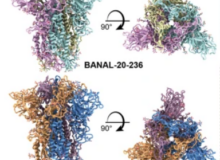by Jonathan Latham, PhD
Many current pesticides in the European Union appear to have been approved illegally the Ombudsman of the EU has said. This judgment was reached on Feb 22nd by the EU Ombudsman, Emily O’Reilly, following an official complaint against the European Commission’s Directorate responsible for public health and consumer safety (DG SANTE).
DG SANTE is responsible for new pesticide registrations in the entire EU. The primary concern of the judgment is DG SANTE’s practice of allowing novel pesticides to be sold without complete data sets on health and environmental safety. These approvals are via a process in which the pesticide is registered ‘conditionally’ rather than in full.
This form of registration is officially called the Confirmatory Data Procedure (CDP).
Registration via the CDP procedure can be given to pesticides despite significant data gaps if the manufacturer has not or cannot supply the necessary information. This lower standard of pesticide registration is allowed under under EU rules, but is for emergency or limited use only. However, currently 88 pesticides have been approved under the CDP process. Many of these ‘temporary’ registrations occurred over ten years ago but still have not been finalized. Therefore, according to the complainant, the EU is using this weaker registration process as the default.
The complaint against DG SANTE was brought by Pesticides Action Network of Europe. It followed a 2012 PAN report Twisting and bending the rules which was also submitted to the Ombudsman. This was filed in late 2013 and concerned 10 representative examples of the 88 pesticides approved under the CDP process.
In her judgment, which ruled mainly in favour of the complainant, Ombudsman O’Reilly wrote that the Commission had approved the pesticides
“even though it appeared to lack sufficient documentation in order to be able to take properly informed decisions ……….. The Ombudsman considered that if this in fact proved to be the case, then this procedural course of action would be unlawful”.
Ombudsman O’Reilly wrote that it is
“difficult to understand how the Commission could legitimately decide …….that these substances have no harmful effect or no unacceptable influence on the environment…and….The Ombudsman considered that her findings were of particular concern because all ten substances were approved many years ago and it appeared that in most of these cases, in spite of the passage of time, the Commission had not completed the assessment of the confirmatory data requested.”
Consequently, DG SANTE’s acts were unlawful since the intention of the lowered standards of the CDP provision was never for it to be used consistently. This use, according to Ombudsman O’Reilly constituted “maladministration” and probably also violated the precautionary principle which is enshrined in EU law. This was particularly so since for some of the pesticides concerned the European Food Safety Authority (EFSA) had identified them as being of high risk. She wrote:
“Bearing in mind that any possible error in the Commissionʹs assessment based on insufficient data may cause serious, possibly irreversible harm to human health, the health of animals or to the environment in general … the CDP needs to be applied with particular caution and restraint.”
In response to a further complaint that DG SANTE was not adequately enforcing the use of necessary mitigation measures by member states, the Ombudsman found gaps which both Member States and DG SANTE were failing to bridge. For example, DG SANTE had failed to ensure that pesticides were removed from the market when approvals were withdrawn having been found to be unsafe.
In consequence of her ruling the Ombudsman has ordered the Commission to comply. It must do so in writing within two years.
In a statement, PAN Europe spokesperson Hans Muilerman said:
“it is clear that DG SANTE and the member states let the interests of industry and farmers prevail over the interests of the public in allowing harmful pesticides on the market with data gaps and high risks. This structural violation of the rules implies that the pesticides currently on the market are not safe.”
The US Environmental Protection Agency (EPA) has also been approving pesticides under less stringent conditional registration standards and then failing to enforce full registration. US EPA has been heavily criticised for this, including in a 2013 NRDC report: Superficial Safeguards: Most Pesticides Are Approved by Flawed EPA Process.
O’Reilly noted that she “is not empowered” to bring a legal case against the Commission.



